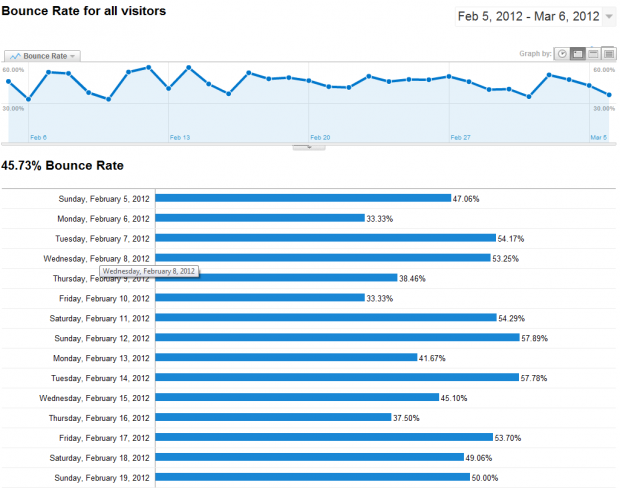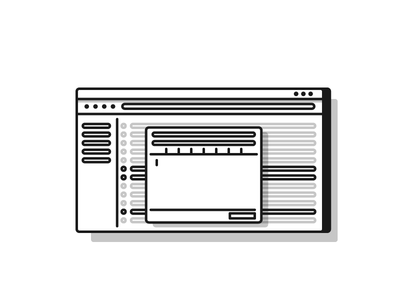The term “bounce rate” simply means the percentage of total visitors to a website which have clicked on another page within a site versus visitors which took no action and left it. Visitors which click through to other pages and/or stay on the site for a long period of time help to lower the bounce rate. However, visitors that click ads posted on the site, do not visit other pages, close their browser, navigate away by clicking the back button or type a new URL all contribute to a higher bounce rate.
How Bounce Rate is Measured
Bounce rate is measured by dividing the numbers of visitors which “bounce” by the number of total visitors to a site on a given day. For example, if a site receives 4,000 hits on one day and 2,800 visitors navigate away or do not visit other pages, the bounce rate would be 70 percent or 2,800 divided by 4,000. However, using the same number of visitors 4,000, with only 1,400 visitors bouncing, the rate would be only 35 percent or 1,400 divided by 4,000.
In these examples, 70 percent and 35 percent show both a high and a low bounce rate. However, these numbers can be deceiving. While 70 percent might be classified as a high bounce rate, it does mean visitors are finding and clicking through to the site initially. And while 35 percent is a low rate, falling below it into the 20-percentile means not many visitors are finding the site.
What High Bounce Rates Mean
As mentioned, high bounce rates means visitors are not staying on the site because no further action is being taken (i.e. not visiting other pages, immediately navigating away). The reasons for these poor metrics is more complex and is particular to the site.
High bounce rates can be the result of a few or many factors. The largest reason is often dissatisfaction with the content on the site. Visitors search for something specifically, arrive at the site and are turned-off by the lack of content relevance. This is a strong indication the keywords associated with the site are not in concert with the content or poorly matched. Other reasons include: difficulty of navigation, confusing color/content schemes and/or lack of proper functionality.
How to Lower a Site’s Bounce Rate
The most effective way to a lower website or blog’s bounce rate is to ensure the META tags are correct–they must be relevant to the site’s material, using keywords which are natural to the content, testing the site’s functionality to ensure each page link works properly and review the site’s internal coding.
A less technical approach is to look at the site through a visitor’s eyes. Is it too complicated? Are there too many colors/schemes which distract from the content? Is the site littered with ads? Are page links in a prominent location? Is the content on the site informative relative to the subject material? Do the keywords stand-out?
Visitors make a decision on whether to stay on a page based on content, usability and access. Without making these a top priority, visitors will simply go on to other pages. After all, there are plenty of other sites on the Internet.
If your site has a high bounce rate or are unsure about how to measure its bounce rate, contact XTELWEB for a free report. In a short time, you’ll know exactly what your site’s bounce rate is and steps that need to be taken to improve it if necessary.


